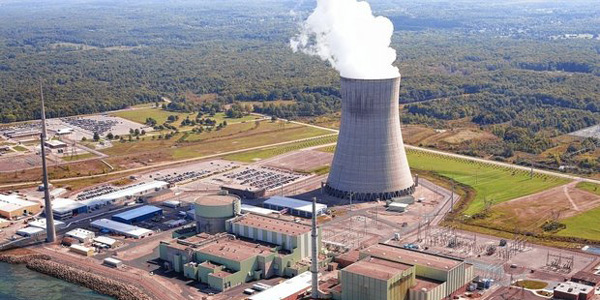By Michael Kuser and Rich Heidorn Jr.
Efforts to incorporate New York’s aggressive climate change policies into NYISO markets are focused on the introduction of a carbon price adder.
The ISO told FERC it has “engaged in a productive dialogue” with state regulators since the May 1-2 technical conference on state policies and wholesale markets.
NYISO is working with The Brattle Group, stakeholders and regulators to determine the feasibility of “Path 4” market design changes in response to the state’s Clean Energy Standard (CES) and its zero-emission credits for Exelon’s Nine Mile Point, R.E. Ginna and James A. FitzPatrick nuclear plants. The CES mandates reducing greenhouse gas emissions by 40% by 2030, from a 1990 baseline, and by 80% by 2050. It also calls for renewables to meet 50% of the state’s energy needs by 2030. (See Carbon Adder to Test FERC’s Independence, IPPNY Panelists Say.)
About 80 parties filed post-conference comments. Among those who expressed support for a Path 4 approach, in addition to the ISO and the Public Service Commission, are New York City, the New York Power Authority and the Independent Power Producers of New York (IPPNY).
The city said Paths 2 and 4 provide the “best opportunities to correct current market constraints” on renewable resources and new technologies procured under public policy goals.
The single-state ISO can “craft a wholesale market structure that wholly integrates the state’s renewable energy objectives and provides renewable generation with better access to the marketplace,” the city said. “Market entry and exit should take into account whether the public good is being served, and whether principles related to resiliency and the improvement of air quality and public health are being advanced or hindered.”
NYPA expressed interest in exploring Paths 1, 2 and 4, and called for the elimination or a scaling back of the minimum offer price rule (MOPR). “The commission should accept state actions which do not interfere with FERC’s responsibilities,” it said.
But a group of about 60 large industrial, commercial and institutional energy consumers in New York who filed as “Multiple Intervenors” said it is not convinced of the wisdom of the Path 4 approach. The group said a status quo Path 3, while “not optimal … may be the most realistic among the choices identified” by FERC.
While the New York Public Service Commission said its work with NYISO to incorporate carbon into the wholesale markets “might be viewed as an endorsement of Path 4,” it said Path 2 “illustrates the limitations of the five paths.”
“While Path 2 may appear to represent a ‘compromise’ position, it hampers the ability of states to carry out legitimate public policies. Further, Path 2’s explicit goal to ‘maintain certain wholesale market prices,’ rather than the original, narrower purpose of mitigating for market power, shows how far afield MOPRs have strayed,” the commission said. “It asserts the right ‘to maintain certain wholesale market prices consistent with the market results that would have been produced had those resources not been state-supported.’ No true market operates in this manner.”
The ISO told FERC it has “engaged in a productive dialogue” with the state Department of Public Service, which includes the PSC, since the May conference and expects to release Brattle’s preliminary findings “in the near future.”
The report can’t come too soon for IPPNY, which said that FERC should require the ISO to file its carbon adder proposal and the Brattle analysis of it as soon as it regains its quorum.
“If the NYISO decides not to file such a proposal, the commission should require the NYISO to explain the basis for its decision,” IPPNY said. “In addition, if the commission decides that capacity markets should be modified to accommodate state public policies, it should direct the NYISO to adopt a forward capacity auction similar to the markets in PJM and ISO-NE.”
Noble Environmental Power, which claims to be the largest wind generator in New York, said its six projects totaling 612 MW will stop receiving state renewable incentives within the next two years. “As more new wind facilities enter the already bottled market in Upstate New York with discriminatory out-of-market incentives to meet state policy goals, energy prices will be substantially reduced — with a significant likelihood that the projects’ output will be curtailed under market dispatch rules.” It called for a Path 4 solution, saying FERC should order the ISO to integrate emissions-free electricity as an attribute in its markets to ensure “a level playing field” for renewables and nuclear generators.
Urgency
IPPNY, Eastern Generation, New York City and the Multiple Intervenors said the need for action is urgent. “Conflicts between state public policies and federally regulated wholesale electricity markets almost certainly will continue to get worse, thereby harming customers and other market participants irreparably,” the large customer group said.
The PSC agreed “the need to address these issues is urgent.”
But it added, “proper time must be given to explore possible solutions. … This is not the time to rush into a quick fix without thought of the impacts on the market and legitimate public policy goals.”
(See related stories, We Read 79 FERC Comments So You Don’t Have to)





